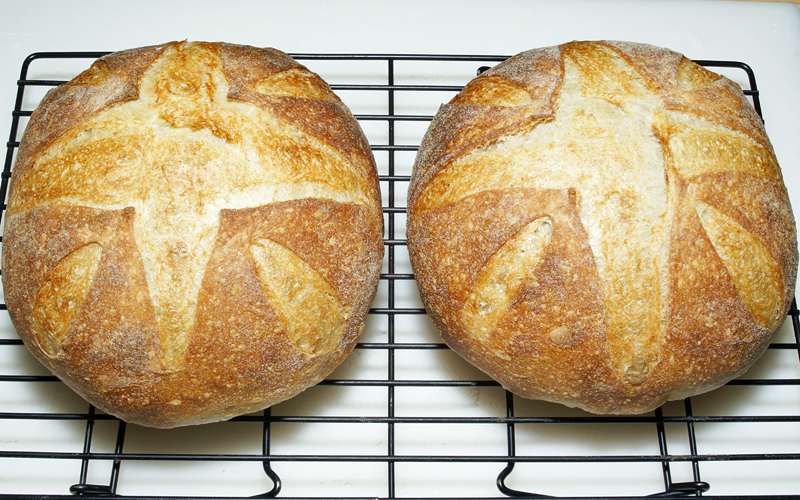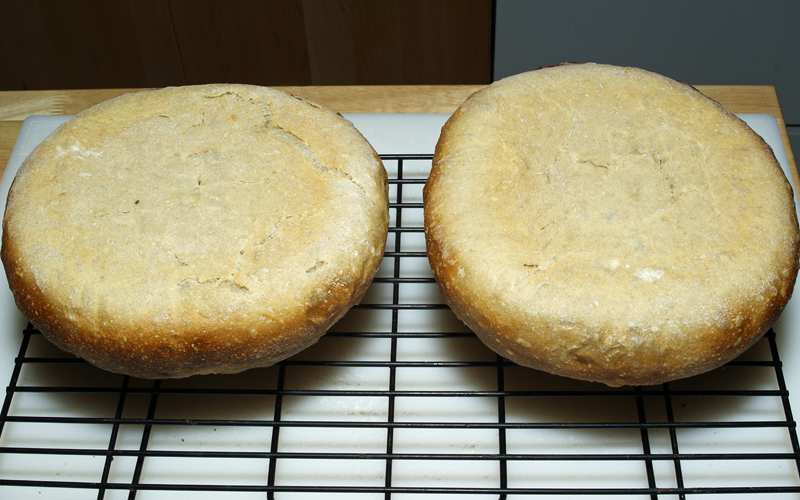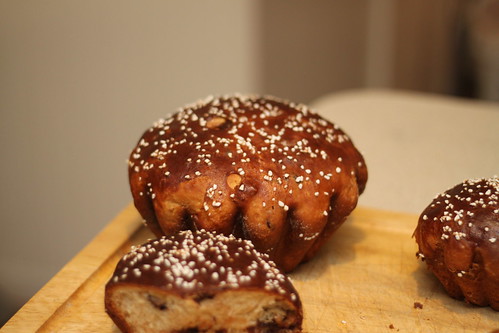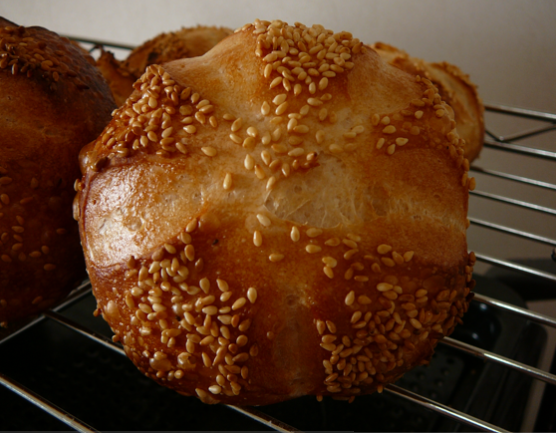Oops!
Yesterday I baked two sourdough boules; it's become a weekly chore. Sourdough has all but replaced our pre-starter days' bread machine whole wheat or white sandwich loaf dough. Two loaves, with a baguette or two, and occasionally Jewish Rye keeps the two of us well stocked for a week to ten days.
Nice looking loaves, yes?
And now, another point of view.
- Log in or register to post comments
- 18 comments
- View post
- davidg618's Blog



